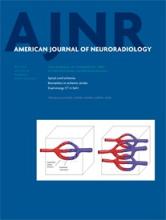The article by Wittschieber et al1 offers very interesting insights into subdural hygromas (SDHys) in the particular context of abusive head trauma (AHT).
We definitely agree that any pericerebral subdural collections—that is, hygromas or chronic subdural hematomas (true evolution within a few weeks of a subdural hematoma)—should prompt pediatricians to strongly consider AHT if all other classic etiologies have been ruled out.
We would, however, like to comment on the issue of dating the causal episode in cases of SDHy. The authors offered 2 possible concepts to explain SDHy formation: delayed formation as an intermediate stage of a subdural hematoma and rapid formation from a tear in the arachnoid membrane. The term “acute SDHy” is suggested for the latter case, which usually consists of both CSF and blood (giving it its so-called “mixed-attenuation” appearance). As a result, the mixed-attenuation pattern cannot be used to date the causal event. We agree with this completely.
However, we disagree with the idea that in the context of violent acceleration-deceleration, an acute SDHy can occur without any hemorrhagic component and, therefore, present as a homogeneous hypoattenuated pattern such as that shown in Fig 3 of the article. In fact, consideration of the head circumference is of major importance. Figure 3 illustrates the case of an infant presenting with a sudden increase in head circumference—from the 50th to 90th percentile—in 1 month. We could hypothesize that the sudden increase in head circumference suggests the presence of a previous subdural hematoma, 1 month earlier, due to previous shaking. The small, hyperintense, subacute subdural hematoma in the posterior fossa, along with retinal hemorrhages, may indicate more recent bleeding due to a more recent shaking episode. Such an “age-different” pattern is important to recognize, given that shakings are often repeated.2 In our opinion, the head circumference is a key sign—when available—that a subdural collection may be related to a previous subdural hematoma and therefore to a previous episode of shaking. Therefore, we disagree with the authors' conclusion that “the SDHy in this well-documented case can be regarded as a result of acute injury,” and we believe that this is a case of repeated shaking.
Considering all previous clinical signs and symptoms, including head circumference, is crucially important when using imaging features to assess the “age-different” patterns of subdural collections.3 This is not only a legal issue in the courts but also a key diagnostic sign for AHT.
REFERENCES
- © 2015 by American Journal of Neuroradiology












